A decade of small steps for Ural results in a motor that’s thoroughly modern

Sidecar specialists Ural have spent the past 10 years rebuilding the heart of their three-wheeled machines in a series of almost invisible, incremental steps, slowly bringing the 82-year-old Eastern European firm thoroughly up-to-date.
Externally, and to the untrained eye, the horizontally opposed 745cc air-cooled flat twin engine looks much the same as it did when the first Ural rolled off the production line in 1941.
However, due to a boost in investment, the company has been able to adopt improved engineering techniques – leading to better alloying, casting, and tighter component tolerances, meaning claimed increases in quality, durability and reliability.
New for 2023 is a fresh camshaft, roller tappet and rocker arm mechanism that can be retro-fitted to Ural’s existing 750cc engines in its entirety.
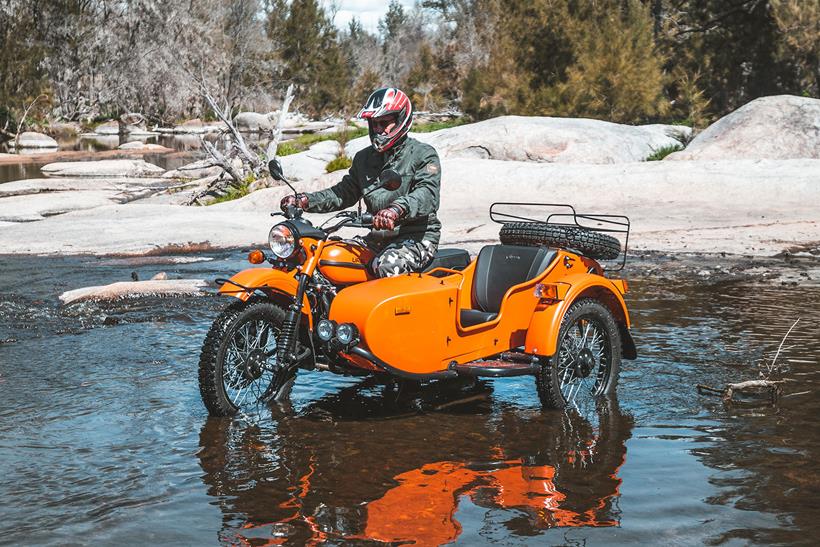
The cam has different shaped lobes to account for the new roller tappets and is now fitted with a bronze guide, replacing the old cast aluminium one. Completing the system are beefier pushrods and finely machined rocker arms also featuring bronze bushing, and a more refined adjusting mechanism.
Also new for this year is a reusable rubberised rocker cover gasket which replaces the single-use cork-based gaskets of old and requires less torque in order to seal.
This is the end of a decade-long engineering quest for the historic company, a journey which began with a simple change from a plastic starter cover to one that is now cast within the engine casing.
Elsewhere, every possible source of oil leakage has been addressed, too, including at the rear bearing housing which now features a machined groove and rubber seal.
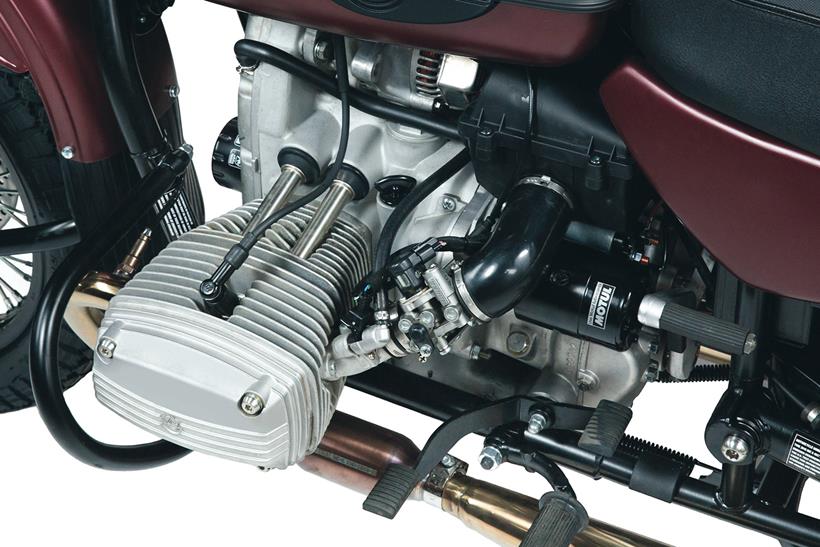
With previous engines, the tolerances were so inconsistent between production runs that only parts engineered specifically for that batch would fit. An example being the timing gear centre-to-centre distances could be slightly off, resulting in different numbered timing gear sets specific to that engine’s tolerances. Now Ural produce just one set – saving time, money, and frustration – should you ever need to replace it.
Additionally, thanks to new tooling, the rear cam bearing now fits without the need of a bush to take up any slack from manufacturing inconsistencies.
Ural have also released for this year a new 2WD constant velocity joint for its sidecars, which can be retrofitted to models equipped with the U-joint system. The sealed CV joint will require less maintenance and will be a more reliable transmitter of power to the sidecar’s wheel than the previous design.
Video: MCN rides a Ural sidecar outfit
New dog, new tricks: The surprising new tech that makes the Ural Ranger tick
First published 12 February 2021 by Jordan Gibbons

Sidecar specialists Ural have spent the past 10 years rebuilding the heart of their three-wheeled machines in a series of almost invisible, incremental steps, slowly bringing the 82-year-old Eastern European firm thoroughly up-to-date.
Externally, and to the untrained eye, the horizontally opposed 745cc air-cooled flat twin engine looks much the same as it did when the first Ural rolled off the production line in 1941.
However, due to a boost in investment, the company has been able to adopt improved engineering techniques – leading to better alloying, casting, and tighter component tolerances, meaning claimed increases in quality, durability and reliability.
New for 2023 is a fresh camshaft, roller tappet and rocker arm mechanism that can be retro-fitted to Ural’s existing 750cc engines in its entirety.
The cam has different shaped lobes to account for the new roller tappets and is now fitted with a bronze guide, replacing the old cast aluminium one. Completing the system are beefier pushrods and finely machined rocker arms also featuring bronze bushing, and a more refined adjusting mechanism.
Also new for this year is a reusable rubberised rocker cover gasket which replaces the single-use cork-based gaskets of old and requires less torque in order to seal.
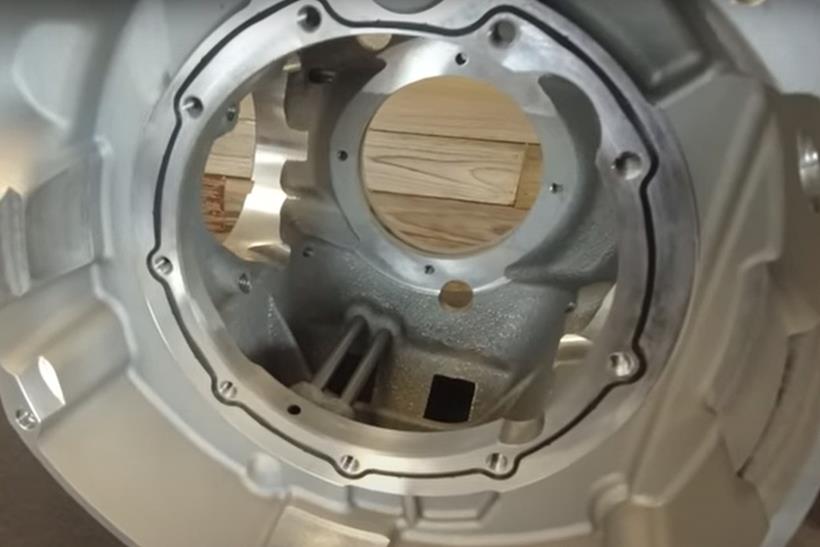
This is the end of a decade-long engineering quest for the historic company, a journey which began with a simple change from a plastic starter cover to one that is now cast within the engine casing.
Elsewhere, every possible source of oil leakage has been addressed, too, including at the rear bearing housing which now features a machined groove and rubber seal.
With previous engines, the tolerances were so inconsistent between production runs that only parts engineered specifically for that batch would fit.
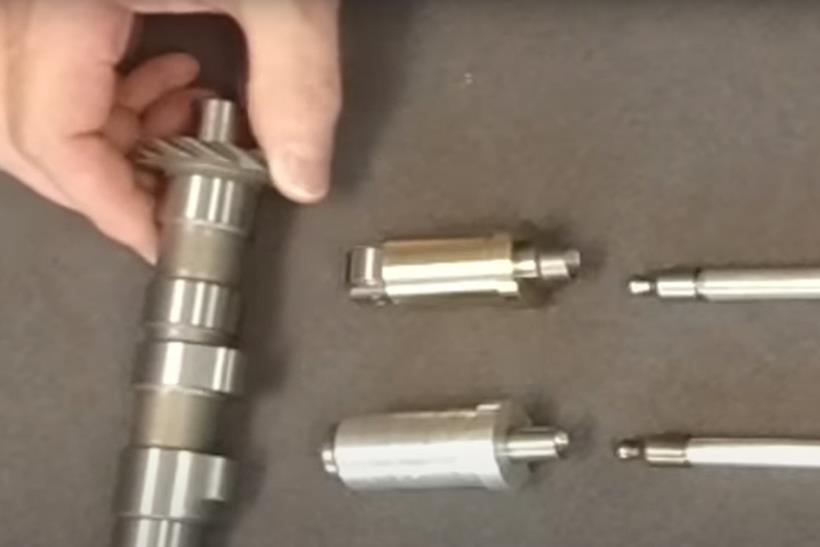
An example being the timing gear centre-to-centre distances could be slightly off, resulting in different numbered timing gear sets specific to that engine’s tolerances. Now Ural produce just one set – saving time, money, and frustration – should you ever need to replace it.
Additionally, thanks to new tooling, the rear cam bearing now fits without the need of a bush to take up any slack from manufacturing inconsistencies.
Ural have also released for this year a new 2WD constant velocity joint for its sidecars, which can be retrofitted to models equipped with the U-joint system. The sealed CV joint will require less maintenance and be a more reliable transmitter of power to the sidecar’s wheel than the previous design.
Ural tech highlights
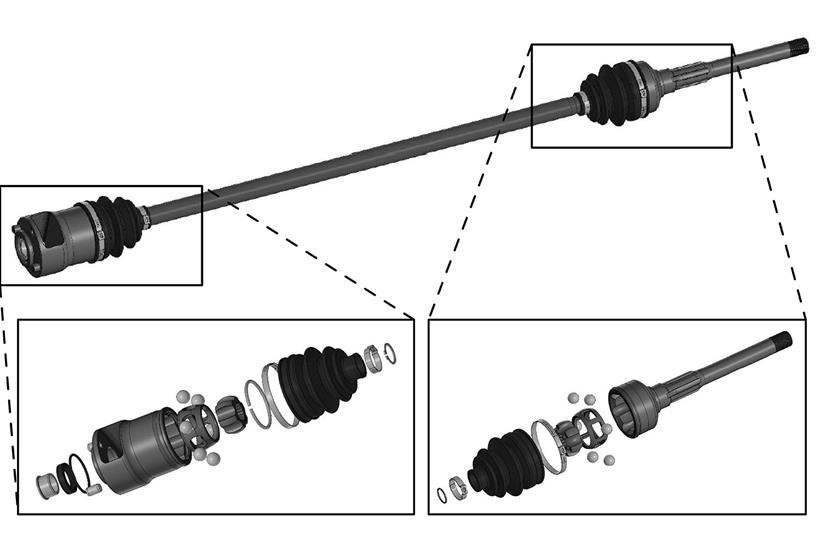
- Rolling on: The new roller tappet with a bronze guide completes the valve opening system that saw beefed up pushrods introduced last year.
- Small beginnings: The starter cover is now part of the engine’s casing. Originally made of plastic, it was the first part to be addressed in the upgrade.
- Constant upgrades: Also new for 2023 are CV joints which can be retrofitted and will provide greater reliability and performance than the U-joint counterparts.
- Inner workings: Tolerances have improved, leading to simpler, more reliable internal parts such as the rear bearing housing.
- Eye spy: Upgrades like the threaded sight window plug for the timing mark have made Urals easier to work on.
New dog, new tricks: The surprising new tech that makes the Ural Ranger tick
First published 12 February 2021 by Jordan Gibbons
Ural have not only overhauled their Ranger sidecar outfit to meet all the latest emissions regulations but they’ve delivered a sidecar first: two-wheel drive for a left-handed rig.
This means that for the first time ever budding sidecar adventurers can go where other bikes can only dream. Achieving Euro5 certification is no easy task for any company, let alone one the size of Ural who only produce around 2000 bikes a year. So, how exactly have they done it? Let’s take a look.
For a start the exhaust system had to be completely redesigned, which involved building a custom stainless steel 2-into-1 with a large high-level rear silencer. This was to reduce noise and increase catalytic area but had the added benefit of improving ground clearance for off-road shenanigans, too.
The exhaust now holds two pre-catalysts in the headers, plus two large diameter catalysts further back. Euro5 regs require rapid warm up of the converters, which some modern bikes achieve with high idles on start up. Fine for water-cooled machines in a temperate climate but not great for an air-cooled engine starting in the minus teens.
Ural have got around this by fitting a set of vacuum valves. A vacuum valve in the exhaust is actuated by the ECU when fed info from a vacuum relay off the throttle bodies, which allows them to rapidly heat the catalysts at low RPM.
Other changes to the flat twin include new pistons, which increase compression by 20%, as well as new coatings on the piston skirts, ring grooves and gudgeon pins to reduce friction. That said, the real genius is saved for the drivetrain.
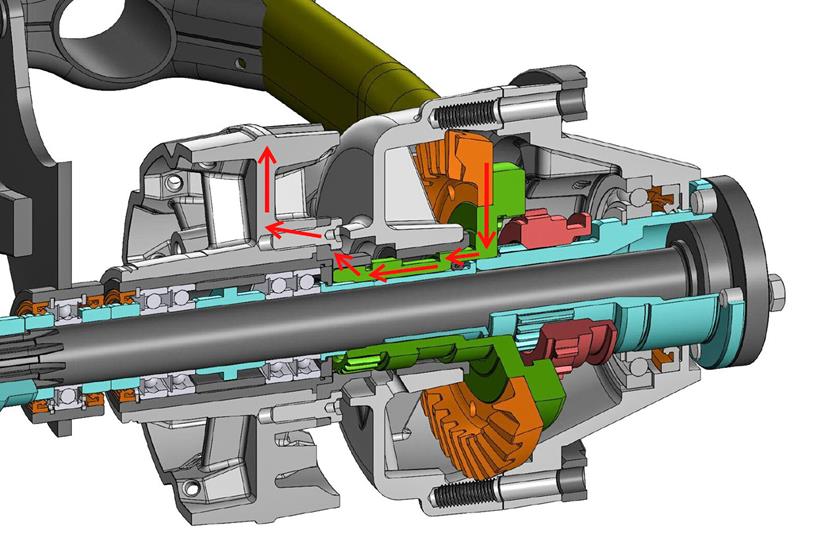
On the 2021 model for the first time, LH sidecars have been able to make use of two-wheeled drive.
Right-handed Ural outfits have had selectable two-wheel drive for some time as the driveshaft attached to the outside of the bevel box. But to add it to an LH rig required some serious reengineering, namely a way of sending a driveshaft through the middle of the driven wheel. The way Ural have done it is clever.
In standard drive, the driveshaft spins the bevel gear, which sends the drive to the rear wheel through a splined shaft. The centre of the rear hub is hollow and sits on a driveshaft that also acts as the axle for both rear wheels.
With the flick of a lever, an extra splined collar slides along the driveshaft locking the driveshaft to the bevel gear, driving both the rear and outfit wheels at once.
The ability to engage or disengage the 2WD system is important because there’s no rear differential so steering is a bit of a handful.
New year, New Ural: updated Ranger brings 2WD to countries that drive on the left
First published on 4 February by Jordan Gibbons
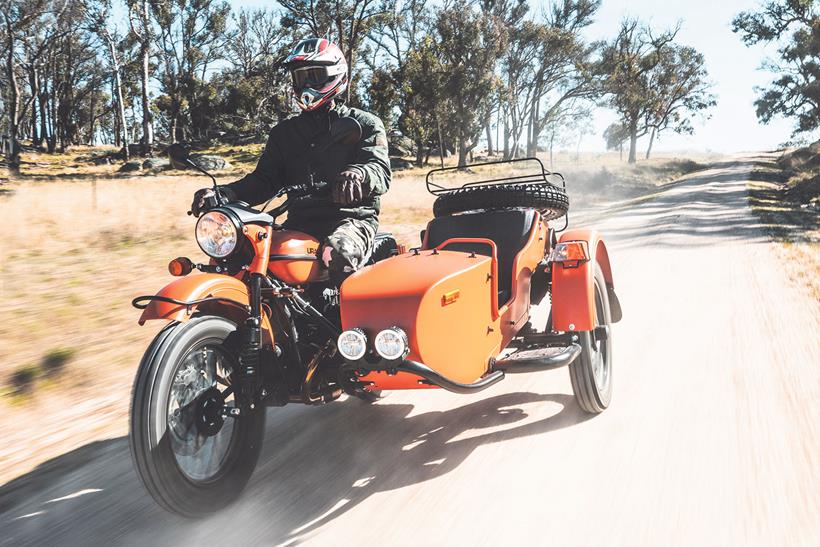
Ural have updated their venerable sidecar outfit with a new Euro5 engine securing its future for years to come, while also introducing a first for a left-handed sidecar: selectable two-wheel drive.
Two-wheel drive is nothing new for Ural, their popular off-road capable Ranger has had it for years but until recently it’s only been available for the right-handed bikes which aren’t much use for UK riders.
Chiefly it’s because the drive for the third wheel comes off the end of the driveshaft, just like the rear wheel of a traditional shaft driven motorcycle. On a right-handed outfit, the third wheel sits on the outside of the bevel box (the item that converts the rotational motion of the shaft into forward motion of the wheel).
That meant that left-handed cars couldn’t get the drive because the third wheel was effectively on the ‘wrong’ side of the bevel box. There’s also the honest reality that most of the world drives on the other side of the road to us, so we can’t really blame them for not developing it until now.
However, with the investment required for updated to Euro5, Ural thought it was time that folks in the UK got a piece of two-wheel drive action.
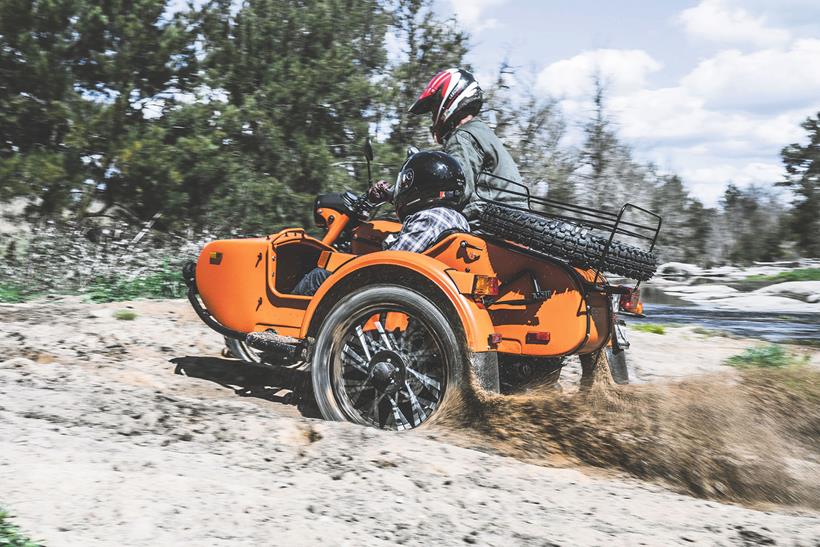
For the most part you ride around in one-wheel drive like a conventional bike but if the going gets very tough, such as deep mud or sand where there’s poor traction, it’s simply a case of flipping a lever and off you go. And if you really can’t make it through, there’s a reverse gear for beating a hasty retreat, too.
As part of this redesign, Ural also worked on the wheels with the result being that all three on the outfit are now the same. That means you can carry one spare which can fit in any of the three positions, so should you get a puncture it’s a 20-minute job to swap one and get back on the road. Nifty.
The Ural uses a Euro5 compliant 745cc air-cooled boxer-twin engine that’s good for 65mph cruising. The sidecar is obviously a seat for a passenger, but also has an 82-litre trunk, LED fog lights, a luggage rack, spare wheel, jerry can and even a shovel!
Plans are afoot to expand the dealer network into the UK, but in the meantime the outfit will be available from an Irish dealer when it arrives later in 2021 for around £16,740.

